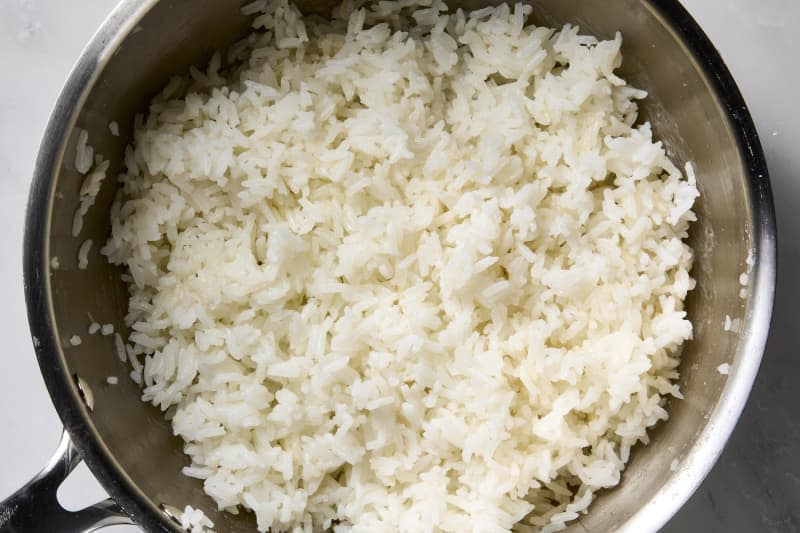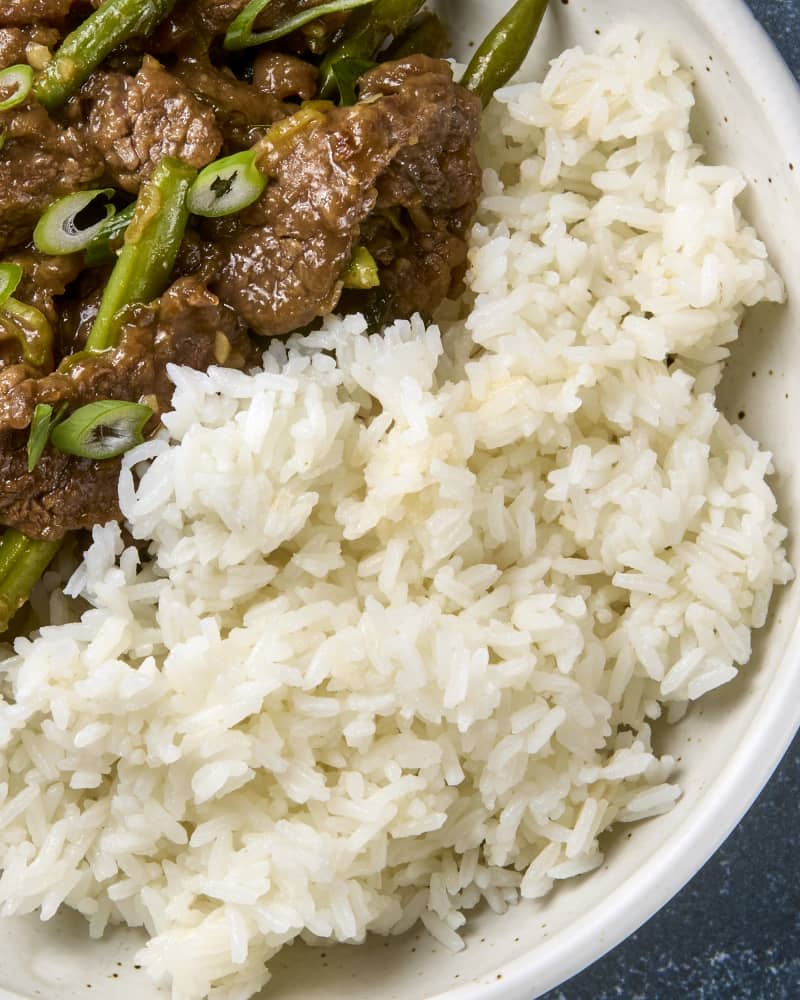The Most Foolproof Way to Make Rice on the Stovetop (It's SO Fluffy!)

I grew up eating steamed jasmine rice every single day for dinner, and it was lovingly made by my grandmother in an ancient electric rice cooker. The scent of jasmine rice still makes me think of Chinese food and home cooking, and it’s hands-down my favorite kind of rice — and a recipe I know by heart.
You can cook jasmine in different appliances such as an Instant Pot or in a rice cooker, but there’s one method that requires zero special equipment: a saucepan and the stove. Here’s how to make jasmine rice on the stovetop that yields perfectly fluffy, tender grains every single time.
Why You’ll Love It
All you need is rice and water. That’s it!
I promise my method produces perfectly tender, fluffy grains of fragrant rice.
Key Ingredients in Jasmine Rice
Jasmine rice: Long-grain white jasmine rice is the one most easily found, but you can also use medium-grain jasmine rice. Do not use brown jasmine rice in this recipe, as it requires a different amount of water and a longer cooking time. (Here’s everything you need to know about jasmine rice.)
Water: Used for rinsing the rice and for cooking.
Salt: An optional ingredient here. When serving jasmine rice with Asian food, it is typically not salted.

How to Make Jasmine Rice
Rinse the rice. Rinse some of the starch off the rice by covering it with cool water and draining twice. I find this rinses the rice more thoroughly than placing it in a strainer and running water over it.
Heat the rice and water. Bring the rice and water to a boil.
Finish cooking over low heat. Cover and cook over low heat until the rice is tender, which takes about 15 minutes.
Steam the rice. Let the rice steam, covered and off the heat, for 10 minutes. Fluff the rice with a fork or chopsticks to break up any clumps.
Helpful Swaps
For more flavorful rice, replace the water with broth.
You can use a regular long-, medium-, or short-grain white rice in place of jasmine rice, but it will not have the same floral jasmine flavor.
How to Cook Jasmine Rice in a Rice Cooker
If you have a rice cooker, cooking jasmine rice in it is even easier than on the stovetop. Use the same ingredient amounts as stovetop jasmine rice. After rinsing the rice, place it in a rice cooker. Add the water and salt (if using), and cook according to rice cooker instructions.
Storage and Make-Ahead Tips
Leftover rice can be refrigerated in an airtight container for up to five days, or frozen in freezer bags for up to three months.
Leftover rice is great for making fried rice or rice pudding.
When reheating leftover rice in the microwave, add a splash of water to help replace some of the moisture lost.
What to Serve with Jasmine Rice
Jasmine Rice Recipe
It comes out fluffy and perfect every single time.
Prep time 5 minutes
Cook time 20 minutes
Makes Makes 3 cups
Serves 2 to 4
Ingredients
1 cup white jasmine rice
1 1/4 cups water
1/4 teaspoon kosher salt (optional)
Instructions
Place 1 cup white jasmine rice in a small saucepan. Add enough cold water to cover. Swish the grains around with your hands. Pour through a fine-mesh strainer. Return the rice to the saucepan and repeat adding cold water, swishing, and straining.
Return the rice to the saucepan. Add 1 1/4 cups water and 1/4 teaspoon kosher salt if desired. Bring to a boil over medium-high heat. Reduce the heat to low. Cover and cook until the water is absorbed and the rice is tender, about 15 minutes.
Turn off the heat. Let the rice sit, covered, for 10 minutes to steam. Uncover and fluff with a fork or chopsticks.
Recipe Notes
Storage: Leftover rice can be refrigerated in an airtight container for up to 5 days, or frozen for up to 3 months.

